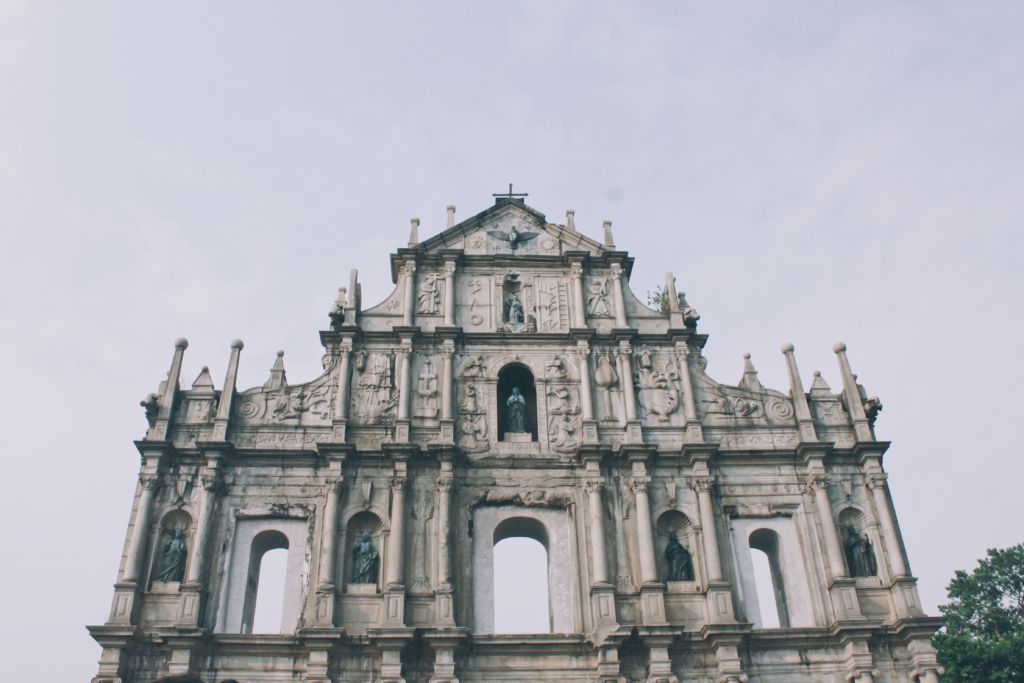It’s everyone’s favorite Macau tourist spot – you’ve seen it too many times to count and it’s on all the postcards and souvenirs. You probably think there is nothing you don’t know about one of the most iconic and well-known Macau landmarks. Well, we have dug up some interesting facts about this landmark that might surprise you. Read on to find out more about the Ruins of St Paul’s!
Original Name
The true name of what is today known as Ruins of St Paul’s is actually Façade of Our Lady Mother of God, or “Mater Dei” in Latin. That is engraved on the main door lintel. The other official name is Façade of Our Lady of the Immaculate Conception, another title for Mother Mary.
Mysterious Construction
The precise construction dates and the developers are unknown. Unfortunately, no documentation remains to shed some light on this crucial data about the monumental church. The construction began in 1601 and the church was inaugurated at Christmas, in 1603. Its façade was added later in 1640 or 1644, with the altars and chapels were decorated after.
It’s widely believed that the architect behind St Paul is Father Carlo Spinola, a Jesuit missionary from Genoa, Italy. However, the rumors have never been confirmed. Moreover, there is a legend that the face of a bearded man crowned with thorns on St Paul’s façade is not Jesus Christ, but Carlo Spinola himself. It is not easy to spot–the image is on the side of the façade, on the upper part.
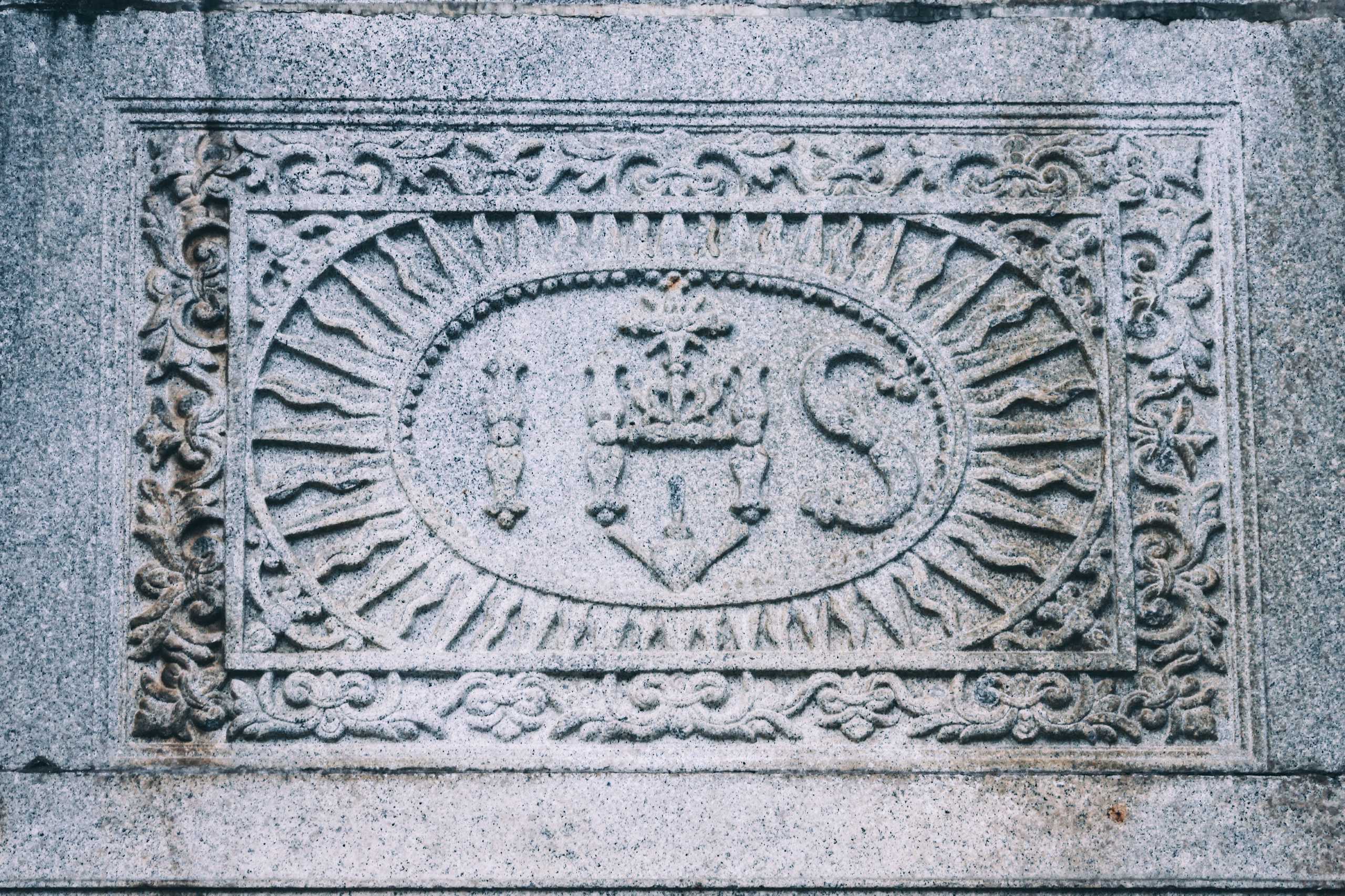
Why It Was Built
St Paul’s church and college replaced a smaller church and the first Jesuits’ residence in Macau that both didn’t survive a fire. But how did Jesuits (see their emblem on the photo above) ended up in Macau in the first place? Well, when they lost their followers to the Protestant Reformation, the Catholic Church formed the Society of Jesus whose main goal was to preserve the Church Tradition. Therefore, Portugal sent Jesuit missioners to the Far East, especially to Japan and China, some of whom set their feet in Macau in 1555.
Macau became a gate to China for the Catholicism and European traditions. Missioners started their “training” in Europe and continued in the established College of Our Lady Mother of God in Macau. Being the first European-style school in the Far East, it played a major role in the exchange of knowledge between Europe and the Middle Kingdom. Catholic missioners learned the Chinese language and philosophy, thus gained respect in China and were allowed to proceed with the mission there. Meanwhile, the new spectacular Church of Our Lady Mother of God helped to spread Christian dogmas among the Chinese population in Macau. The city has become a harbor of European culture in Asia.
The Most Impressive Catholic Church In Asia?
Some critics described it as a uniquely beautiful church that was equal to Catholic Churches in Rome, only outshined by St Peter’s Basilica. “Its façade is admirable, the inside is very big, and it is built in an excellent architectural style. It is all quilted with ducat gold at the top and bottom, with very rare paintings”, mentioned Father Alexander of Rhodes S.J., an important figure of Asian Christianity.
The Façade Composition
The façade has three parts. The base with two stories is the biggest one. It goes all the way up to the figure of the Virgin Mary. This part represents the Earthly World. The intermediate part with Mother Mary in the center links the lower one with the upper triangle that depicts the Divine World.
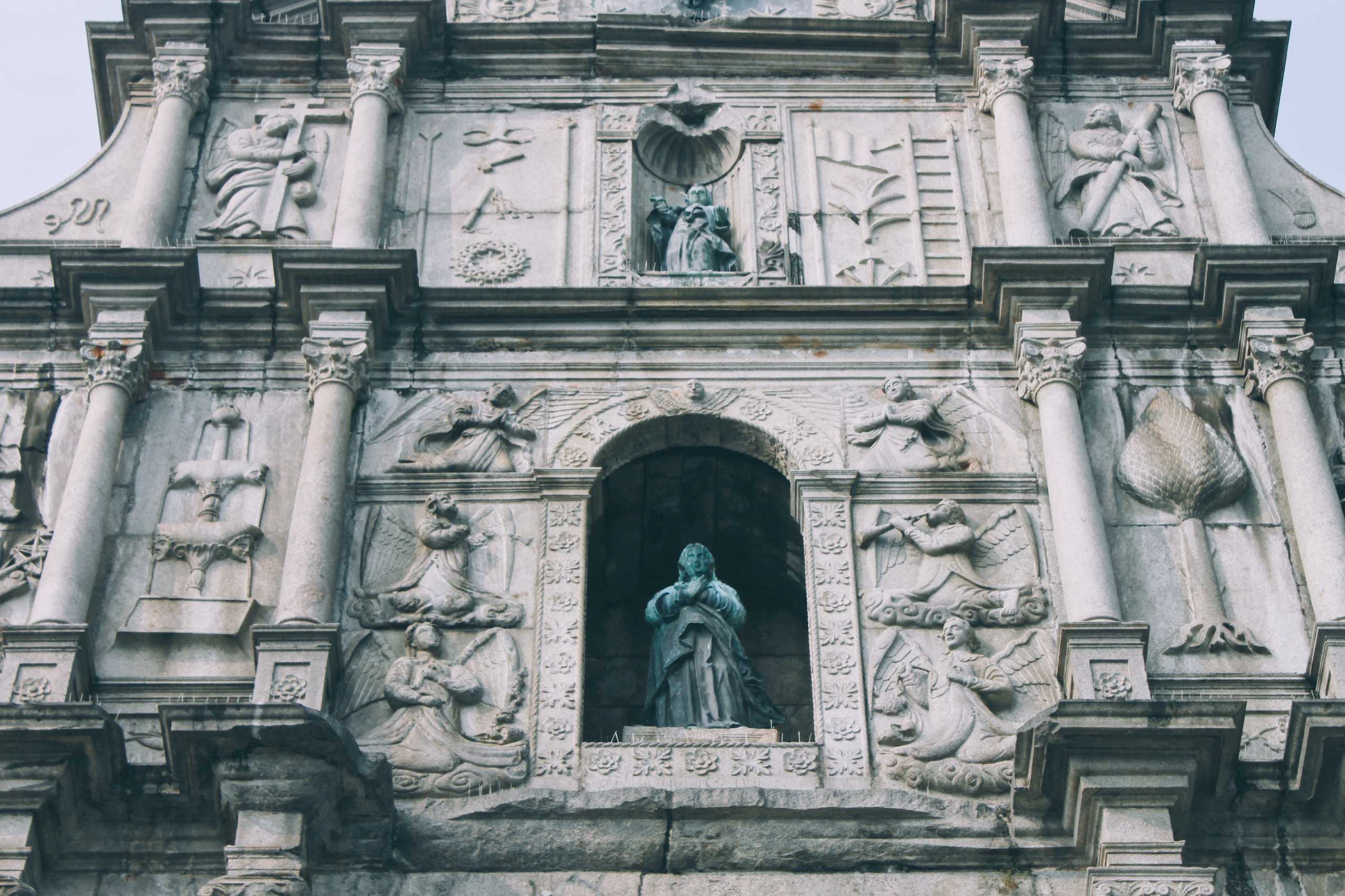
The Main Sculpture
The most important part of the monument is the intermediate story that represents the great mysteries linking man to god with the central figure of the Virgin Mary, the biggest statue on the façade. Standing with her hands crossed on her chest in a pose of compassion, surrounded by six angels celebrating her glory, she embodies grace, purity, and virtue. It was her who became a major bone of contention during the Protestant Reformation.
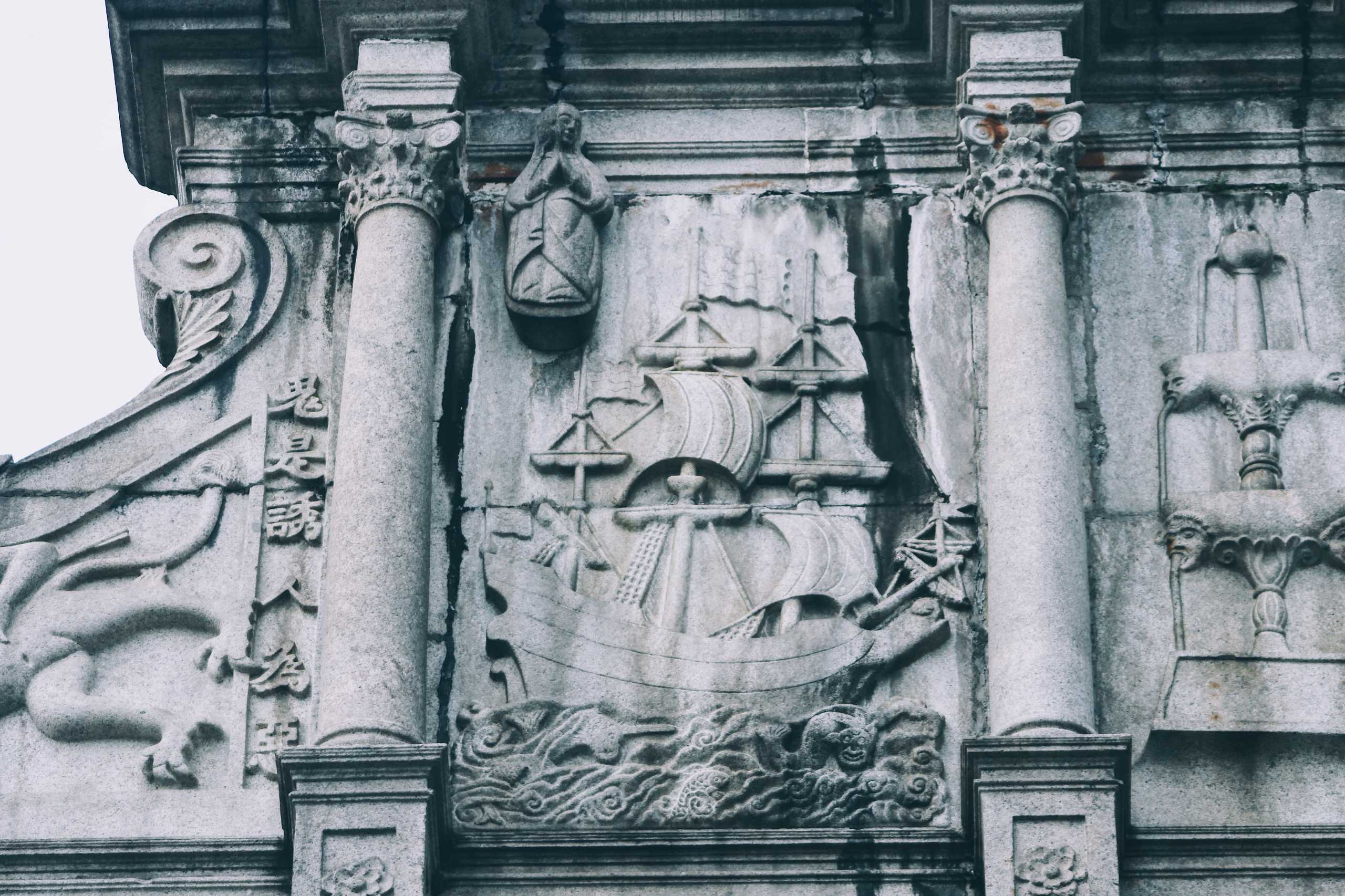
Symbols on the Façade
Sculptured images on one level form a so-called “monumental strip cartoon” which summarizes the Roman Catechism. The left side of the frieze depicts the Spirit of God descending on the altar, while the right side shows the connection of man and god, earthly world, and heaven.
Every symbol and even the tiniest detail are linked to Catholic doctrine and Jesus’ teachings. Like the small door on the extreme right of the frieze, the door to heaven, recalling the well-known “Seek, and you shall find; knock, and it shall be opened unto you”.

The strip of images surrounding Mother Mary on both sides contains traditional Catholic symbols that tell the story of faith. The long difficult path on the way to salvation (the ship), surrounded by temptations and evil (hydra with seven heads, devil, death), guided by virtue (figure of Mother Mary). Three Chinese inscriptions help to understand religious metaphors. Also, take a closer look at the four lions guarding the sides of the façade. The way they are depicted as reminds people of a recognizable Chinese lion. It would be safe to say Chinese cultural code harmoniously embedded into St Paul’s façade.
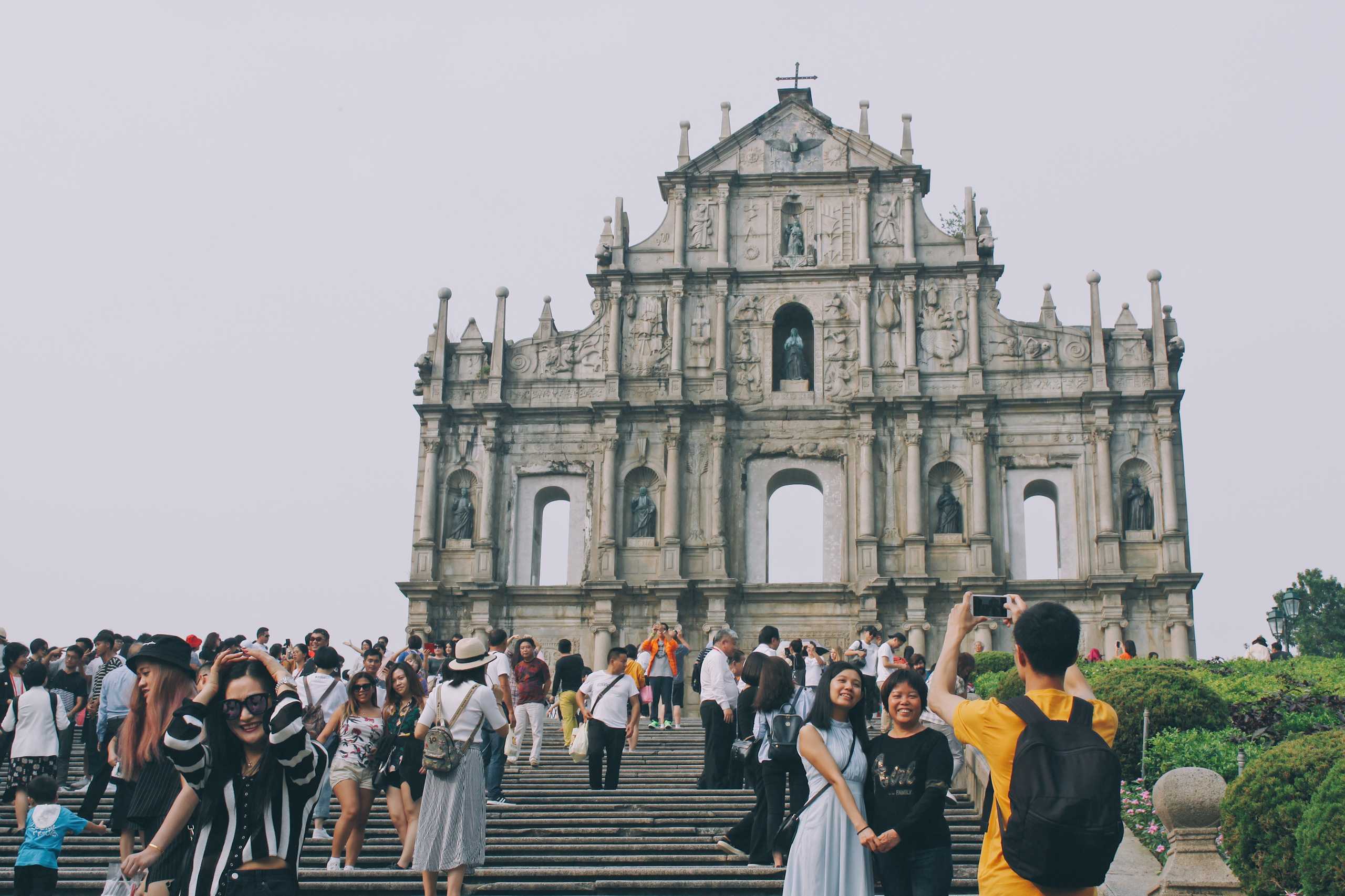
Part of Macau’s History
Putting forward Catholic dogmas rejected by Protestants, such as the cult of Mother Mary, the role of the altar, and the importance of the Mass, Jesuits stressed their mission to restore and conserve the Catholic tradition and establish them in Asia. Thus, St Paul became a monument of Catholic counter-reformation.
In other words, the infamous façade could be defined as a map of Catholic and even Macanese history and culture of the 16 and 19 centuries. Being able to read what is behind the magnificent Ruins of St Paul’s is the key to unveiling the spiritual milestones of Macau. So how about paying this legendary monument another visit?
Ruins of St Paul’s Rua de Sao Paulo, Macau
Based on the “The Mysteries of the MATER DEI Facade of Macao” by Louis Antonin Berchier.

